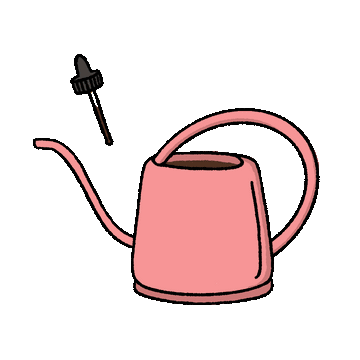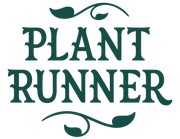Don't get us wrong - we love our Tradescantia tricolour as much as anyone, but taking a walk through a bushland creekline and seeing nothing but this South American import might make you think twice about how you keep this beautiful plant.
So consider this week's blog a PSA - We dive into our favourite houseplants that are actually wreaking havoc in Australian bushland, and we'll show you the best ways to make sure your houseplants don't go bush.
But don't go getting all cull-mad on your plant fam (although if you did need to get rid of a few, last week's blog has got you covered!). Before jumping in any further it would be wise to remind ourselves what a weed actually is:
A plant that is growing where it shouldn’t
I’m sure there is an extended definition out there but that’s the crux of it. It doesn’t mean the plant is any less attractive, or incredible, or needs to be wiped out. Most often a weed is an imported plant that has found the conditions of its new home to be even better than its old one. Maybe there aren’t any predators, or the soil is better, or the climate more appealing. This applies to a number of our houseplants as much as anything else!
(this blog will be referring to weeds in Australia - sorry for the international readers!)
Monstera deliciosa

Photo by Thimo van Leeuwen
Yeah yeah you heard me right - we're coming in hard on the quintessential indoor plant. This fast-growing, low maintenance (two red flags right there) plant is currently causing havoc in the Gold Coast Hinterland.
This aerial climber enjoys the Australian bushland a little too much, climbing up popular koala food sources like the Australian Red Cedar, Forest Red Gum and Flooded Gum.
Chlorophytum comosum

Photo by Susan Wilkinson
We’ve raved about this guy before. The Spider Plant is an impressive indoor feature when cared for correctly - and this isn’t the first time the Spider Plant has made an impact. In the 70’s and 80’s too, people realised just how easy these plants were to grow and care for. Trouble was, when the indoor plant scene faded in the 90’s, people just moved their plants to the garden. Western-Sydney, in particular, has been hit hard. The plant spreads by forming little plantlets (or pups) that lay their roots as soon as they touch the ground. In no time at all the plants can form a blanket across bushland floor.
Tradescantia fluminensis

Photo by Naeem shahrizadegan
The. Worst. This gorgeous indoor plant is an absolute nightmare of a weed once it escapes our pots. Not only does it irritate dog’s skin, but it also is a favourite hiding space for funnel-web spiders. Even worse is that any part of the plant has the ability to form roots, so you need to make sure you remove absolutely everything when clearing from your garden. This plant can turn patches of thriving bushland ecosystem into a monoculture within a year.
Syngonium podophyllum

One of the Plant Runner’s favourites, the beautiful arrowhead plant is an biological menace in tropical Queensland - being labelled and environmental weed throughout the state and a ‘sleeper’ weed or potential weed in other states across the country.
Similar to the Monstera, it’s a fast growing climbing plant that can smother both undergrowth and tall trees.
Opuntia spp

Photo by Veronika Hradilová
Considered a weed of national significance and banned in NSW for sale, the Opuntia was introduced to Australia in the 1830’s as a hedging plant. Thriving in sun and shade, coastal and inland conditions, this plant quickly took off. Loved by many as a fascinating architectural plant, don’t go planting this one in your garden.
But wait there’s more…
This is but a small list. Other popular houseplants that have made it to the Australian weeds list includes: Devil’s Ivy, Foxtail fern, Philodendrons, even fiddle-leaf figs are a potential threat to some parts of Australia.
Managing your houseplants
Read up! Find out what plants are listed as weeds or potential weeds in your state. And don’t go hating on that Fiddle just because it has the potential to go rogue and destructive. Keeping your indoor plants indoors and potted is the key. Remember, so many of our favourite plants aren’t natives - so do your due diligence prior to planting them outside or even placing them somewhere where they have the potential to go wandering. Using your green bin to chuck out ‘the one that didn’t make it’ is also vital. They go through a process of hot composting and prevents them from spreading seed or self-propagating.
And as always - talk to your local nursery folk when buying a plant.


Leave a comment